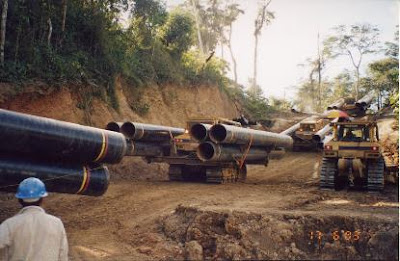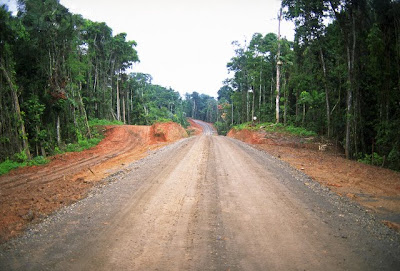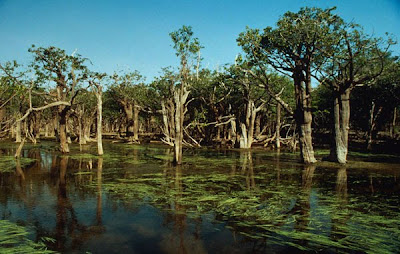[Photograph by: Survival International]
Saturday, October 31, 2009
Indigenous tribe saves crash victims in Amazon
[Photograph by: Survival International]
Brazil Moves to Restrict Foreigners’ Land Purchases in the Amazon
[Photograph by: Brazilian Government]
Wednesday, October 28, 2009
The Healing Cat’s Claw
[Photograph by: NeoTropico Consultants]
Tuesday, October 27, 2009
Peru tribes pressure Hunt Oil to leave Amazon
[Photograph by: Houston Chronicle Publishing]
Monday, October 26, 2009
Top Reasons to Buy Acai Berry from Earth Friendly Companies
[Photograph by: AcaiBerrryStudy.net]
The faster, fiercer, and always surprising sloth, an interview with Bryson Voirin
There are six species of sloth in the world, and although four of them are considered Least Concern by the IUCN Red List, sloth's are not immune to the many threats facing tropical species.
[Photograph by: Tropical American Tree Farms]
Sunday, October 25, 2009
Roads harm rainforest species
Biologically, rainforests are characterized by a complex architecture and a uniquely humid, dark stable climate. They sustain many species that are incredibly specialized for the forest’s interior and understory conditions.
[Photograph by: Corbis Corporation]
Saturday, October 24, 2009
Photo: Amazon at the beginning of flooding season
In the Amazon region, there are basically two seasons: a rainy season and a not-so-rainy season. In the rainy seasons, one can expect up to 60-180 inches. In the "dry" season, one can expect anywhere from 30 inches to 100 inches. Some spots along the basin average more or less than others. Generally, the north and south edges of the basin have less than the western edge.
[Photograph by: Michel Roggo/WWF]
Thursday, October 22, 2009
The Sloth: endearing and endangered Rainforest mammal, going no place fast

Sloths are the slowest moving of all mammals. Most of their entire lives are spent hanging upside-down from the branches of trees in the Central and South American rainforests.
[Photograph by: Christian Mehlführer]
Sambazon Becomes First to Achieve Fair Trade Crop Certification for Acai

Wednesday, October 21, 2009
Rainforest Rescue: Sky Project To Save Trees

The aim is for the Brazilian state of Acre to act as a role model for conservation in Brazil and the project will help local communities to look after their forests.
[Photograph by: Per-Anders Pettersson/Getty Images]
Tuesday, October 20, 2009
Genocide of an ancient Amazon tribe

Brazil's indigenous Akuntsu tribe has been whittled to only five members after the group's oldest, Urur, died.
Act now to help the Akuntsu!
[Photograph by: Survival International]
Poison Dart Frog Profile

Poison dart frogs, members of the Dendrobatidae family, wear some of the most brilliant and beautiful colors on Earth. Depending on individual habitats, which extend from the tropical forests of Costa Rica to Brazil, their coloring can be yellow, gold, copper, red, green, blue, or black.
[Photograph by: George Grall/National Geographic]
Monday, October 19, 2009
Q&A with filmmaker Joe Berlinger

Joe Berlinger's new documentary, "Crude," is set deep in the Amazon jungle and tells the David-and-Goliath story of one of the world's biggest environmental lawsuits. The 30,000 Ecuadorean plaintiffs claim that Texaco (now part of Chevron) contaminated a Rhode Island-sized zone of the rainforest while drilling for oil, creating a surge of cancer and other health problems among the indigenous people.
[Photograph by: theskepticaloptimist]
Sunday, October 18, 2009
Hugo Blanco: Indigenous ‘struggle for nature’
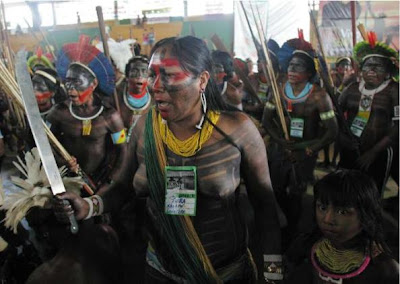
The Amazonian indigenous people are fighting not just for themselves or Peru; they are fighting to defend the lungs of the planet.
[Photograph by: Andre Penner/AP]
Friday, October 16, 2009
Brazilian governors recommend reward for actions to preserve Amazon rainforest

[Photograph by: Marcello Casal Jr/ABr]
A Terrific Photo

This photograph shows a toucan in the Costa Rican rainforest. You can see a banana tree and also a papaya tree. Fruits make up 95% of the toucan's diet, but they will also eat insects, small lizards and sometimes bird eggs.
Please visit "Costa Rica 2007" for more great photographs:
http://picasaweb.google.com/srslush
[Photograph by: srslush]
Wednesday, October 14, 2009
Amazon loses 273 km ² of forest in August, says Imazon

Please note: This article is in Portuguese.
[Photograph by: Alberto Cesar/Greenpeace]
Tuesday, October 13, 2009
Brazil's Lula vows to slow rate of Amazon deforestation

[Photograph by: CityFiles/WireImage.com]
New Study Shows Dam in Brazil Amazon Would Be Social and Ecological Disaster
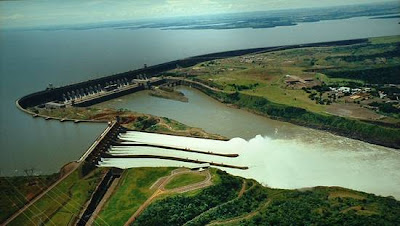
Take Action! Write a letter to stop Belo Monte Dam!
[Photograph by: Ultimate Journey]
Monday, October 12, 2009
World Rainforest Week kicks off

[Photograph by: Steven Holt/Stockpix.com]
No more biofuels for Amazonia

[Photograph by: Andre Penner/AP]
Sunday, October 11, 2009
The ‘Crude' truth

[Photograph by: Crude The Movie]
Rainforests Still in Trouble
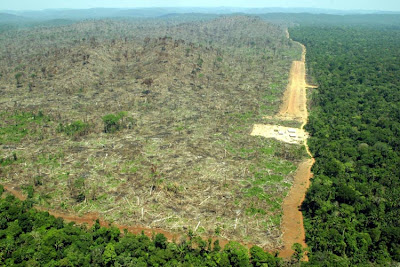
[Photograph by: The Argentimes]
Thursday, October 8, 2009
Wednesday, October 7, 2009
Extracts from Amazon fruit tree have shown dramatic success in killing cancerous cells

Seven Fascinating Facts

1. Rainforests once covered 14% of the earth's land surface; now they cover a mere 6% and experts estimate that the last remaining rainforests could be consumed in less than 40 years.
2. The U.S. National Cancer Institute has identified 3000 plants that are active against cancer cells. 70% of these plants are found in the rainforest.
3. Rainforest plants are rich in secondary metabolites, particularly alkaloids.
4. The Amazon rainforest contains the largest collection of living plant and animal species in the world.
5. The number of species of fish in the Amazon exceeds the number found in the entire Atlantic Ocean.
6. One-fifth of the world's fresh water is in the Amazon Basin.
7. At least 3000 fruits are found in the rainforests; of these only 200 are now in use in the Western World. The Indians of the rainforest use over 2,000.
Please visit Raintree Nutrition for more facts:http://www.rain-tree.com/facts.htm
[Photograph by: Big Ambition]
Tuesday, October 6, 2009
Brazilian beef producers agree to protect Amazon rainforest

Monday, October 5, 2009
Catholic leaders: Amazon projects threaten Indians
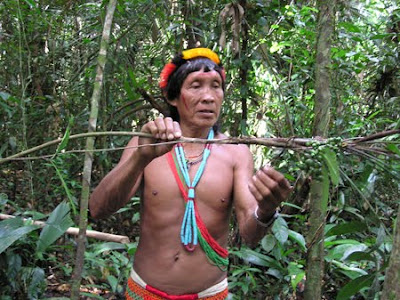
Amazonian cattle ranchers are starting to replant trees with funding from Norway

Paulo Adario, Greenpeace's Amazon director and one of the most vocal critics of Amazon ranchers, describes the project as a "drop in the ocean" but acknowledges that such initiatives are a move in the right direction.
[Photograph by: Michael Nichols/National Geographic]
Sunday, October 4, 2009
Causes of Deforestation in the Amazon (2000-2005)

This graph shows that over 90% of deforestation in the years 2000 through 2005 was due to cattle ranches and small scale agriculture.
[Graph (with data) by: Advantage Trim & Lumber]
Friday, October 2, 2009
River of plenty

[Photograph by: ABC News]



